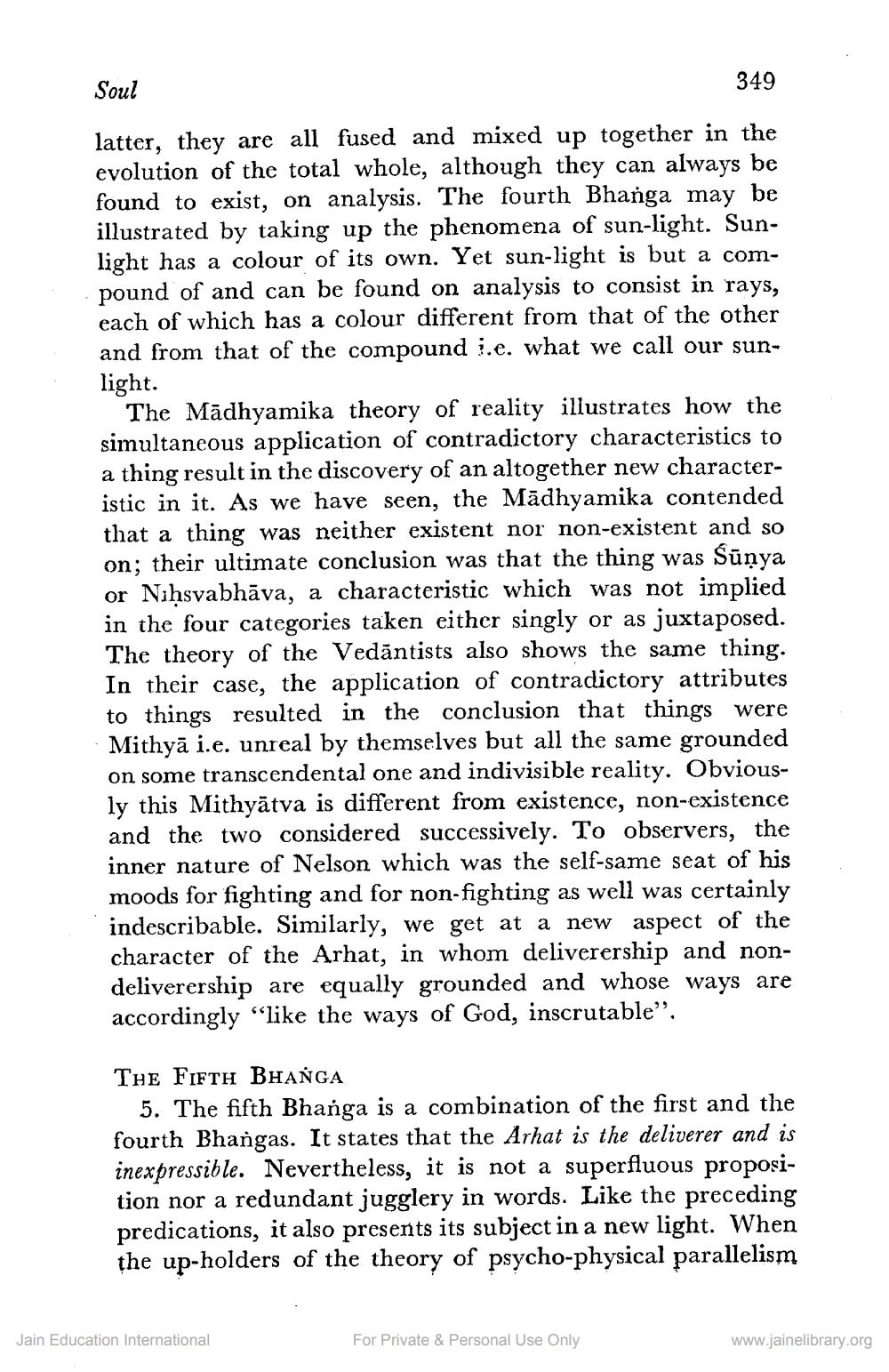________________
Soul
349 latter, they are all fused and mixed up together in the evolution of the total whole, although they can always be found to exist, on analysis. The fourth Bhanga may be illustrated by taking up the phenomena of sun-light. Sunlight has a colour of its own. Yet sun-light is but a compound of and can be found on analysis to consist in rays, each of which has a colour different from that of the other and from that of the compound i.e. what we call our sunlight.
The Mādhyamika theory of reality illustrates how the simultaneous application of contradictory characteristics to a thing result in the discovery of an altogether new characteristic in it. As we have seen, the Mādhyamika contended that a thing was neither existent nor non-existent and so on; their ultimate conclusion was that the thing was Sūnya or Niḥsvabhāva, a characteristic which was not implied in the four categories taken either singly or as juxtaposed. The theory of the Vedāntists also shows the same thing. In their case, the application of contradictory attributes to things resulted in the conclusion that things were Mithyā i.e. unreal by themselves but all the same grounded on some transcendental one and indivisible reality. Obviously this Mithyātva is different from existence, non-existence and the two considered successively. To observers, the inner nature of Nelson which was the self-same seat of his moods for fighting and for non-fighting as well was certainly indescribable. Similarly, we get at a new aspect of the character of the Arhat, in whom deliverership and nondeliverership are equally grounded and whose ways are accordingly “like the ways of God, inscrutable”.
THE FIFTH BHANGA
5. The fifth Bhanga is a combination of the first and the fourth Bhangas. It states that the Arhat is the deliverer and is inexpressible. Nevertheless, it is not a superfluous proposition nor a redundant jugglery in words. Like the preceding predications, it also presents its subject in a new light. When the up-holders of the theory of psycho-physical parallelism
Jain Education International
For Private & Personal Use Only
www.jainelibrary.org




